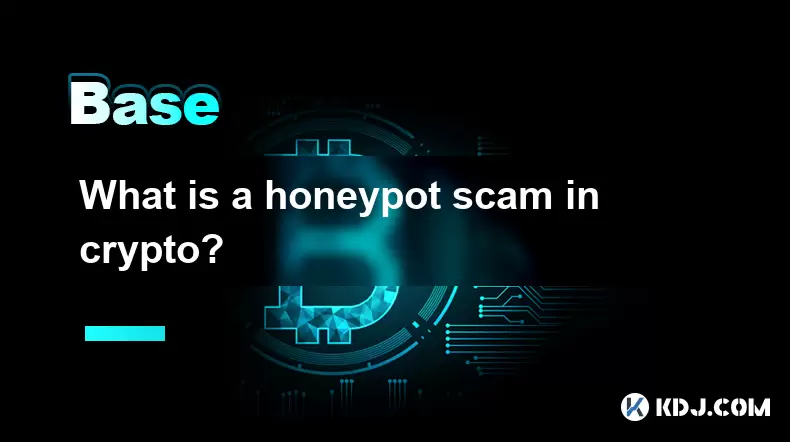-
 Bitcoin
Bitcoin $118400
0.39% -
 Ethereum
Ethereum $3814
2.17% -
 XRP
XRP $3.547
1.34% -
 Tether USDt
Tether USDt $1.000
0.00% -
 BNB
BNB $769.5
2.95% -
 Solana
Solana $191.7
6.36% -
 USDC
USDC $0.9999
0.01% -
 Dogecoin
Dogecoin $0.2722
7.75% -
 Cardano
Cardano $0.8995
5.59% -
 TRON
TRON $0.3158
-0.78% -
 Hyperliquid
Hyperliquid $47.37
4.46% -
 Stellar
Stellar $0.4848
3.54% -
 Sui
Sui $4.031
1.72% -
 Chainlink
Chainlink $20.11
3.94% -
 Hedera
Hedera $0.2832
3.16% -
 Avalanche
Avalanche $26.20
4.27% -
 Bitcoin Cash
Bitcoin Cash $530.5
0.67% -
 Shiba Inu
Shiba Inu $0.00001568
3.59% -
 Litecoin
Litecoin $118.4
1.42% -
 UNUS SED LEO
UNUS SED LEO $8.976
-0.23% -
 Toncoin
Toncoin $3.349
2.54% -
 Polkadot
Polkadot $4.590
2.54% -
 Uniswap
Uniswap $10.56
-0.59% -
 Ethena USDe
Ethena USDe $1.001
0.00% -
 Monero
Monero $327.7
0.39% -
 Pepe
Pepe $0.00001422
2.62% -
 Bitget Token
Bitget Token $4.973
-1.22% -
 Dai
Dai $1.000
0.02% -
 Aave
Aave $331.9
1.59% -
 Bittensor
Bittensor $429.6
-0.56%
What is a honeypot scam in crypto?
A honeypot scam in crypto traps investors by blocking token sales or transfers, often mimicking legitimate DeFi projects to steal funds.
Jul 21, 2025 at 06:35 am

Understanding the Concept of a Honeypot Scam in Cryptocurrency
A honeypot scam in crypto refers to a deceptive smart contract mechanism designed to lure investors into what appears to be a promising decentralized finance (DeFi) token or project. These scams are particularly dangerous because they mimic legitimate projects and often appear on decentralized exchanges like Uniswap or PancakeSwap. The key feature of a honeypot contract is that it prevents token holders from selling their tokens or withdrawing liquidity, effectively trapping their funds.
These contracts are usually created by malicious developers who have embedded restrictions into the smart contract code. These restrictions may include blocking sell functions, manipulating transfer logic, or setting up hidden rules that only affect buyers. Victims often discover the scam after investing, when they find they cannot sell their tokens or transfer them freely.
How Honeypot Scams Operate in the Crypto Ecosystem
The operation of a honeypot scam is rooted in the manipulation of smart contract code. When a new token is launched, it may have a seemingly normal interface and even appear on popular decentralized exchanges. However, the underlying smart contract contains traps that are invisible to the average investor.
- Restrictions on Token Transfers: The contract may allow buying but block selling or transferring tokens to external wallets.
- Fake Liquidity Pools: Scammers often add liquidity to attract investors, but they may have a backdoor to drain it later.
- False Promises and Marketing: Honeypot projects often use aggressive marketing, fake influencers, or social media bots to generate hype and attract early buyers.
Victims are usually drawn in by the promise of high returns or unique features. Once they invest, they find that their tokens are stuck, and the scammers have already withdrawn the liquidity or locked the contract.
Identifying a Honeypot Scam Before Investing
Recognizing a honeypot scam requires a combination of technical analysis and due diligence. Investors should not rely solely on the appearance of a token or the promises made in whitepapers or social media.
- Check the Smart Contract: Use platforms like BscScan or Etherscan to review the contract code. Look for functions like "transfer", "sell", or "withdraw" and see if they are restricted or contain unusual modifiers.
- Use Honeypot Detection Tools: Tools like HoneyTrap, BSC Honey, or Dune Analytics dashboards can scan a token's contract and flag potential honeypot behaviors.
- Test with a Small Transaction: Before investing a large amount, send a small amount of tokens to another wallet or attempt to sell on a decentralized exchange. If the transaction fails or reverts, it’s likely a honeypot.
- Verify Liquidity Lock: Check if the liquidity is locked via a time-locked contract. Scammers often claim liquidity is locked but retain control through loopholes.
These steps can help investors avoid falling victim to a honeypot scam.
Real-World Examples of Honeypot Scams in Crypto
Several notable honeypot scams have emerged in the crypto space, particularly on Binance Smart Chain and Ethereum.
- Safuu.com Incident: Safuu was a DeFi project that claimed to offer a secure token listing platform. However, many tokens listed on its platform were honeypots. Investors found they could not sell their holdings, and the platform eventually shut down amid allegations of fraud.
- Fake PancakeSwap Listings: Some tokens mimic the branding of well-known projects and appear on PancakeSwap. Unsuspecting investors buy in, only to realize the "sell" button doesn't work or results in a failed transaction.
- Token Sniffer Reports: Several tokens flagged by Token Sniffer as honeypots have shown classic signs—blocked sell functions, owner privileges, and unresponsive contracts.
These examples illustrate how even seemingly reputable platforms can host malicious tokens.
Steps to Recover Funds from a Honeypot Scam
Recovering funds from a honeypot scam is extremely difficult, but not entirely impossible in some cases.
- Contact the Developer: If the project has an active community or contact method, reach out. Some developers may respond if the pressure from the community is strong enough.
- Use Blockchain Explorers: Track the liquidity pool and contract interactions. If the developer has not yet removed liquidity, it may be possible to initiate a community sell-off or pressure them to unlock the contract.
- Report to Authorities and Platforms: File a report with local financial authorities and notify platforms like BscScan or Etherscan. While recovery is unlikely, it may help prevent others from falling victim.
- Join Class Action Efforts: In some cases, victims have pooled resources to hire legal counsel and pursue action against developers, especially if the scam involves a significant amount of money.
These steps are not guaranteed to result in recovery but may offer some recourse.
Preventing Future Honeypot Scams in Crypto Investments
Prevention is the most effective strategy when dealing with honeypot scams. Investors should adopt a cautious approach to new tokens and decentralized finance projects.
- Always Audit Contracts: Use platforms like BscScan, SolidityScan, or Slither to audit smart contracts before investing.
- Avoid Rushed Investments: Scammers often create a sense of urgency to invest quickly. Taking time to verify the token's legitimacy can prevent losses.
- Engage with Communities: Join Telegram or Discord groups and ask technical questions. Legitimate projects usually have responsive developers and active communities.
- Use Trusted Wallets and Tools: Wallets like Trust Wallet or MetaMask may integrate with honeypot detection services to warn users before a transaction.
Adopting these preventive measures can significantly reduce the risk of falling victim to a honeypot scam.
Frequently Asked Questions
Q: Can honeypot scams be reversed or undone once funds are sent?
A: In most cases, once funds are sent to a honeypot contract, they cannot be recovered. The contract is designed to trap tokens, and unless the developer intervenes, the funds remain locked.
Q: Are honeypot scams illegal?
A: While the act of creating a honeypot scam is often fraudulent and unethical, the legal classification varies by jurisdiction. Many countries are still developing regulations around cryptocurrency fraud.
Q: Can a honeypot scam exist on Ethereum?
A: Yes, honeypot scams are not limited to any specific blockchain. They can appear on Ethereum, Binance Smart Chain, Solana, and other networks that support smart contracts.
Q: How do developers benefit from honeypot scams?
A: Developers benefit by collecting the liquidity or funds sent by investors. They may drain the liquidity pool or manipulate the token supply to sell their holdings at inflated prices.
Disclaimer:info@kdj.com
The information provided is not trading advice. kdj.com does not assume any responsibility for any investments made based on the information provided in this article. Cryptocurrencies are highly volatile and it is highly recommended that you invest with caution after thorough research!
If you believe that the content used on this website infringes your copyright, please contact us immediately (info@kdj.com) and we will delete it promptly.
- Crypto Stocks, Stablecoin Law & Trump: A New Era?
- 2025-07-22 02:30:12
- Kaito, Web3, and Crowdfunding: A New Era of Capital Alignment?
- 2025-07-22 02:30:12
- Saylor, Trump, and Bitcoin: A New York Minute on Crypto's Power Trio
- 2025-07-22 00:50:12
- Strategy, Bitcoin, and $122,000: A New York Minute on Crypto's Latest Moves
- 2025-07-22 00:50:12
- Dogecoin Price Prediction: Will the Pump Continue?
- 2025-07-22 01:50:12
- AVAX Price, Mining Rewards, and PI Price: What's the Buzz?
- 2025-07-22 01:50:12
Related knowledge

What is the difference between CeFi and DeFi?
Jul 22,2025 at 12:28am
Understanding CeFi and DeFiIn the world of cryptocurrency, CeFi (Centralized Finance) and DeFi (Decentralized Finance) represent two distinct financia...

What is the difference between a sidechain and a Layer 2?
Jul 20,2025 at 11:35pm
Understanding the Concept of SidechainsA sidechain is a separate blockchain that runs parallel to the main blockchain, typically the mainnet of a cryp...

What is the Inter-Blockchain Communication Protocol (IBC)?
Jul 19,2025 at 10:43am
Understanding the Inter-Blockchain Communication Protocol (IBC)The Inter-Blockchain Communication Protocol (IBC) is a cross-chain communication protoc...

How does sharding improve scalability?
Jul 20,2025 at 01:21am
Understanding Sharding in BlockchainSharding is a database partitioning technique that is increasingly being adopted in blockchain technology to enhan...

What is the "crypto trilemma" of scalability, security, and decentralization?
Jul 19,2025 at 06:28pm
Understanding the Concept of the Crypto TrilemmaThe crypto trilemma refers to the challenge of simultaneously achieving scalability, security, and dec...

What is a cliff and vesting schedule in tokenomics?
Jul 20,2025 at 10:28am
What Does a Cliff Mean in Tokenomics?In tokenomics, a cliff refers to a specific period during which token holders are not allowed to access or transf...

What is the difference between CeFi and DeFi?
Jul 22,2025 at 12:28am
Understanding CeFi and DeFiIn the world of cryptocurrency, CeFi (Centralized Finance) and DeFi (Decentralized Finance) represent two distinct financia...

What is the difference between a sidechain and a Layer 2?
Jul 20,2025 at 11:35pm
Understanding the Concept of SidechainsA sidechain is a separate blockchain that runs parallel to the main blockchain, typically the mainnet of a cryp...

What is the Inter-Blockchain Communication Protocol (IBC)?
Jul 19,2025 at 10:43am
Understanding the Inter-Blockchain Communication Protocol (IBC)The Inter-Blockchain Communication Protocol (IBC) is a cross-chain communication protoc...

How does sharding improve scalability?
Jul 20,2025 at 01:21am
Understanding Sharding in BlockchainSharding is a database partitioning technique that is increasingly being adopted in blockchain technology to enhan...

What is the "crypto trilemma" of scalability, security, and decentralization?
Jul 19,2025 at 06:28pm
Understanding the Concept of the Crypto TrilemmaThe crypto trilemma refers to the challenge of simultaneously achieving scalability, security, and dec...

What is a cliff and vesting schedule in tokenomics?
Jul 20,2025 at 10:28am
What Does a Cliff Mean in Tokenomics?In tokenomics, a cliff refers to a specific period during which token holders are not allowed to access or transf...
See all articles

























































































